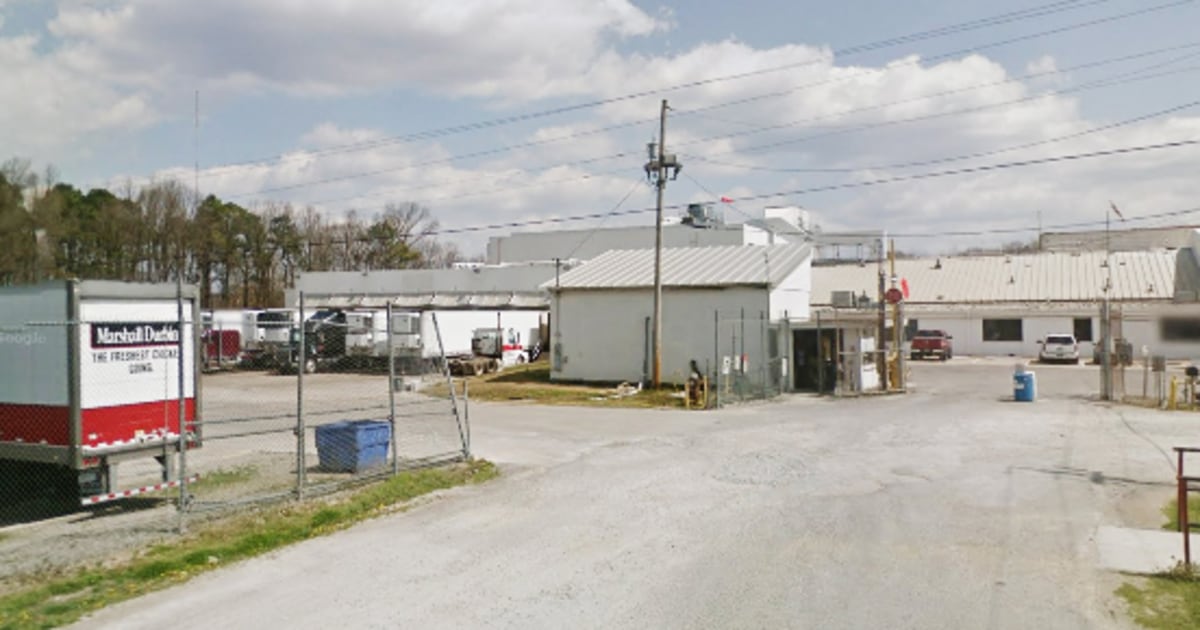Mar-Jac Poultry has denied it knowingly hired minors for its Jasper, Alabama, plant, and also argued some workers were doing jobs that are not banned by federal rules.
Four minors as young as 16 were allegedly discovered working overnight at an Alabama slaughterhouse owned by the same firm that was found directly responsible for the death of a 16-year-old Mississippi worker last summer, the U.S. Labor Department said in federal court filings.
The company, Mar-Jac Poultry, has denied that it knowingly hired minors for its Jasper, Alabama, facility, saying the workers had verified IDs that gave ages older than 17, and has also argued that some of the workers were performing jobs that are not prohibited by federal regulations.
The Labor Department is seeking a temporary restraining order against Mar-Jac as part of the ongoing legal dispute. Agency officials declined to comment, citing their investigation.
The Labor Department has said that most slaughterhouse work is too dangerous for minors and is prohibited by federal regulations. Under the Biden administration, the department has taken action against companies for employing minors to clean, use or work near dangerous machinery. A chicken trade group to which Mar-Jac belongs says it has “zero tolerance” for employing minors, and a major meat industry trade group also stated recently that no minors should be working in slaughterhouses.



Stop endangering human mental and physical health by encouraging workers (often POC / immigrants) to unnecesaeily suffer. Go vegan.
Who do you think plants and harvests the crops? The ones that have to be done by hand and can’t be done with a combine?
I voluntarily worked in tobacco as young as 10 because I wanted new NES games. Stripping tobacco under the table seemed pretty sweet at the time, there were some downsides in retrospect.
Most crops go into animal agriculture, not human consumption. Plant based diets use vastly less resources
It’s true that plant based diets use fewer resources (inherently true because of net productivity works), but it’s not what the parent comment is talking about. Fodder crops are not hand harvested. They’re harvested with big machines as cheaply as possible. If you add another acre or 20 of barley to the world, there may not be a single additional person helping to harvest it.
The parent comment is drawing a contrast with human crops like tomatoes and strawberries that are typically harvested by backbreaking manual labor.
We should make this more spoken about honestly. I never hear people speaking about specific crops requiring more physical labor than others by strong varying amounts
I’m not sure if you’re asking this as a pragmatic question or something else. If you mean pragmatic, we could encourage the use of finding alternative means of aquiring the veggies/fruit. Monoculture can also be potentially to be blamed here because it could lead to a gap in the amount of work in a work day depending on the crop you do. Having varied crops over acres could make work days much easier. Community small gardens and rooftop gardens for cities would help. Potentially the use of small-scale hydroponic systems, such as the Aerogarden, coule help. However I’m not sure of it’s overall impact compared to soil grown. Tomato plants give off such an abudance of tomatos that from my experience sustain my tomato use for months, easily. Tomatos arent as important as like legumes or grains, which I’m guessing off of your comments, are easier to harvest. Grains and legumes have a lot more calories. But once again I’m not sure if I’m even answering your question the way you are intending
I’m not the one who posted the initial response, I’m just explaining what they meant.
Also, this isn’t intended to be dismissive or insulting because I recognize that everyone comes from different backgrounds and experiences, but it’s pretty widely known that different crops have different labor costs. Everyday is a chance to learn something new though. Here’s a quick overview from UC Davis on the subject.
I’d also recommend the book Fresh Fruit, Broken Bodies if you want a more personal, on-the-ground understanding of (some of) the human costs of agriculture. Understand that no book can cover everything though and there’s much worse costs than anything it covers.
None of this human cost is inherently related to concepts like monocropping either. Rather, they’re related to the economic and political context agriculture exists in, especially how those impact current mechanisation capabilities. Harvesting things like cereals is so efficient in large part because of the huge demand from livestock agriculture for cheap feedstock to justify the development/purchase of things like combine harvesters.
Some crops aren’t heavily mechanized though, and modern agriculture hires cheap laborers instead. These tend to be the expensive things at the grocery store for fairly obvious reasons, but not always. If you’re buying Spanish produce in Europe (e.g. bell peppers), there’s a reasonable chance it was harvested by migrant workers working under inhumane conditions in a greenhouse. Things like coconuts tend to have slavery and animal cruelty in their supply chains and that’s the basis for a good chunk of cuisine in South Asia.
Another way to directly tie specific crops to their human costs is to look at the daily dead body reports by US border patrol. They tend to spike a couple weeks before/after certain crop harvests. Strawberries and tomatoes show up particularly strongly in this kind of analysis, which is why I mentioned them. You can also see the spikes from things like grapes, lettuce and beans.
That’s hardly the only industry this happens in.